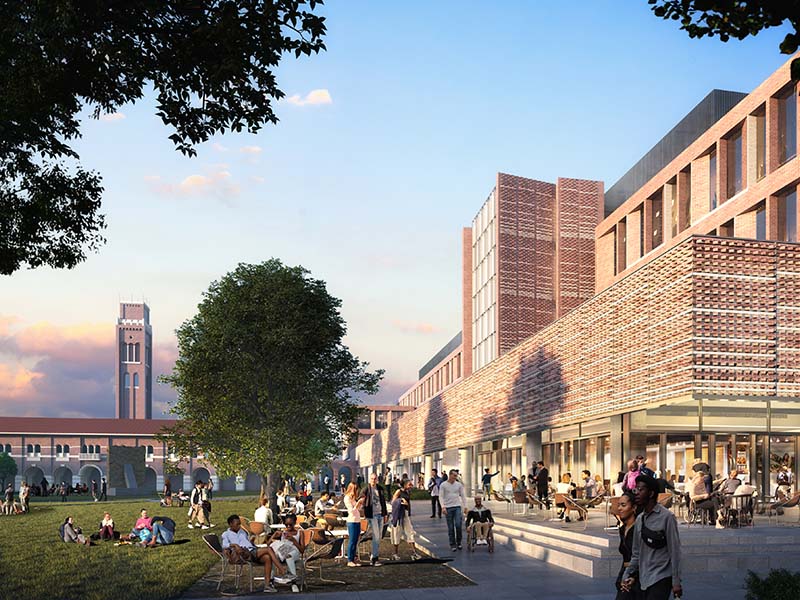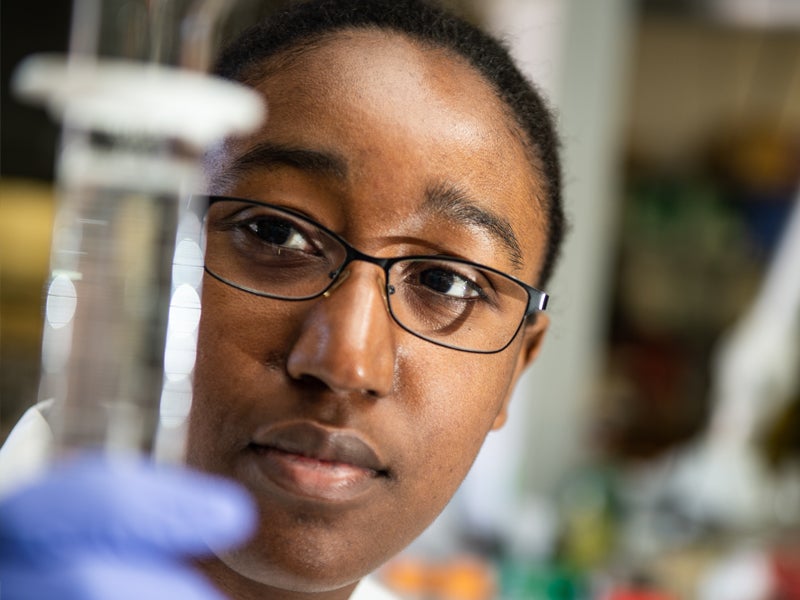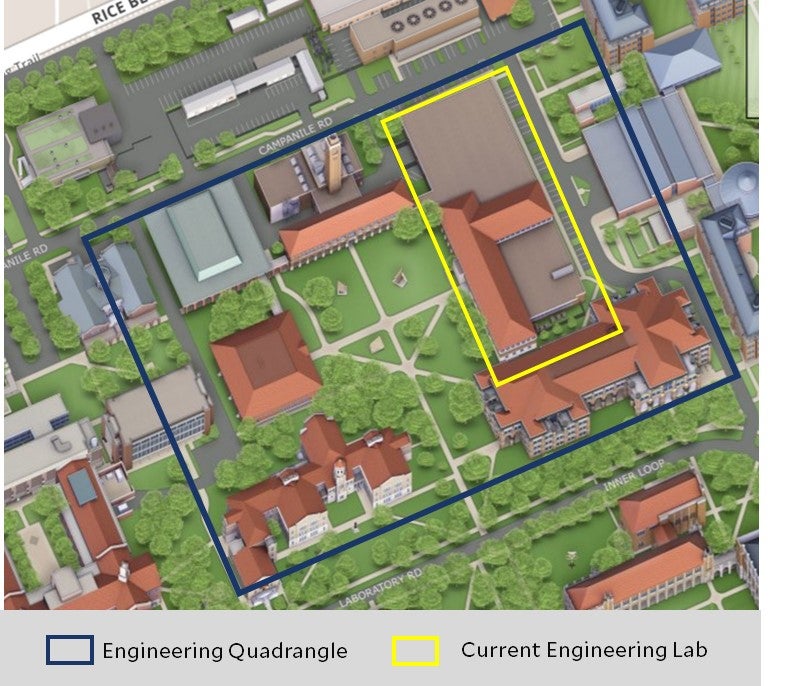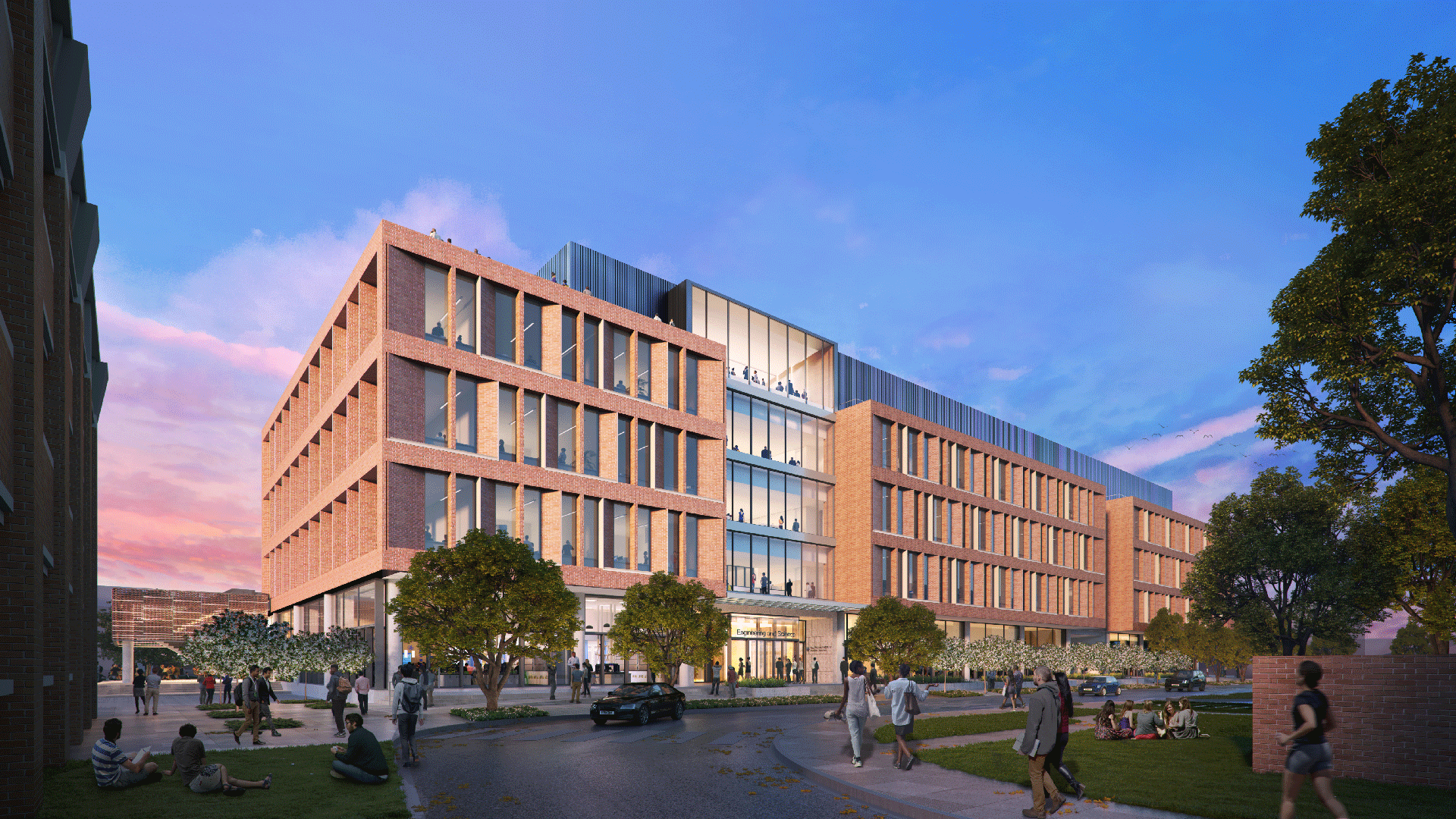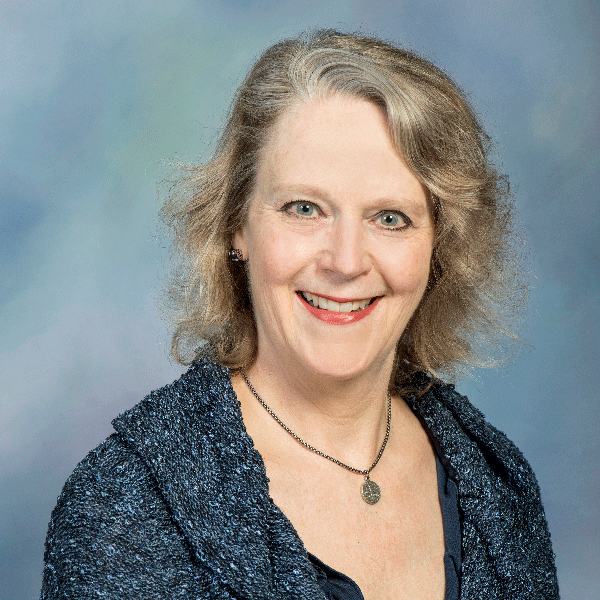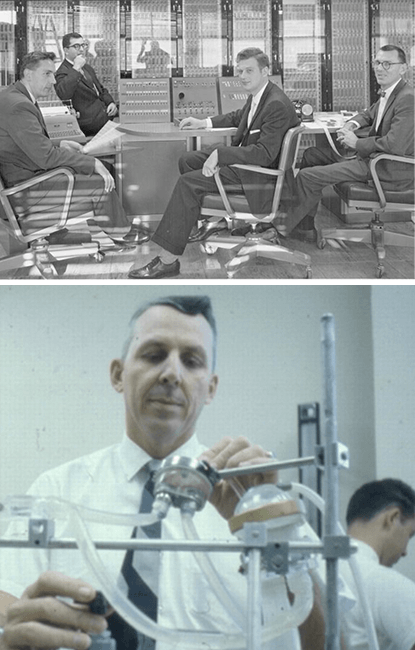The new Engineering and Science Building will be constructed on the site of the Abercrombie Engineering Laboratory, a facility that was has served Rice’s engineering students and faculty since 1948. Abercrombie was built with a gift from the parents of alumna and philanthropist Josephine Abercrombie ’46. During its tenure on campus, the building played a storied role in some of the university’s most exciting innovations. In 1956, three faculty members designed and built the R1, the university’s first large computational research computer and the fastest computer on a university campus at the time. Abercrombie was also home to the biomedical lab of William Akers, who was instrumental in developing the first artificial human heart. While the demolition of this building closes out one chapter in the history of research excellence at Rice, the construction of a cutting-edge new facility in its footprint opens remarkable opportunities for the next generation of innovators.
Built in 1948, Abercrombie Engineering Laboratory served Rice’s engineering students and faculty for 72 years, playing a storied role in some of the university’s most exciting innovations. In 1956, three faculty members designed and built the R1, the university’s first large computational research computer and the fastest computer on a university campus at the time. Abercrombie was also home to the biomedical lab of William Akers, who was instrumental in developing the first artificial human heart in 1965. While the demolition of Abercrombie closes out one chapter in the history of research excellence at Rice, the construction of a cutting-edge new facility in its footprint opens remarkable opportunities for the next generation of innovators.

